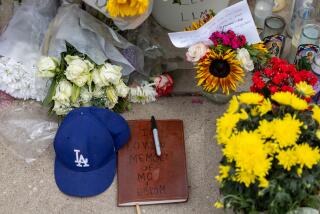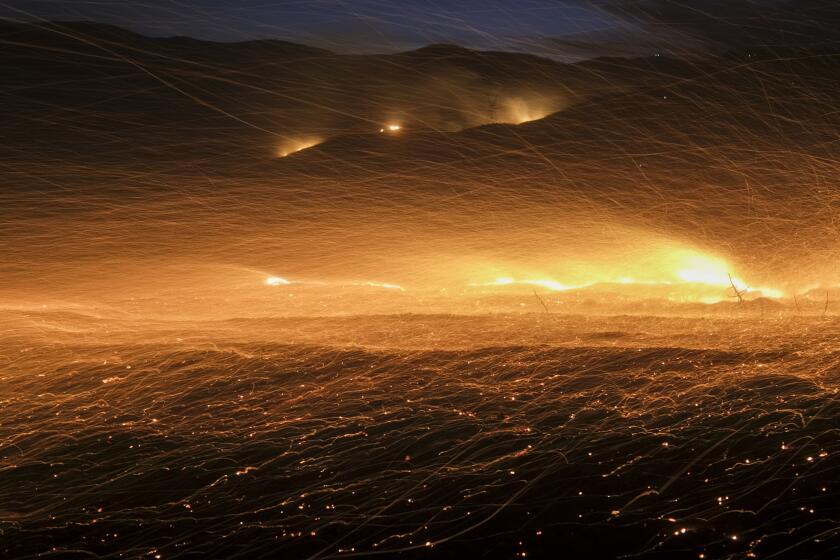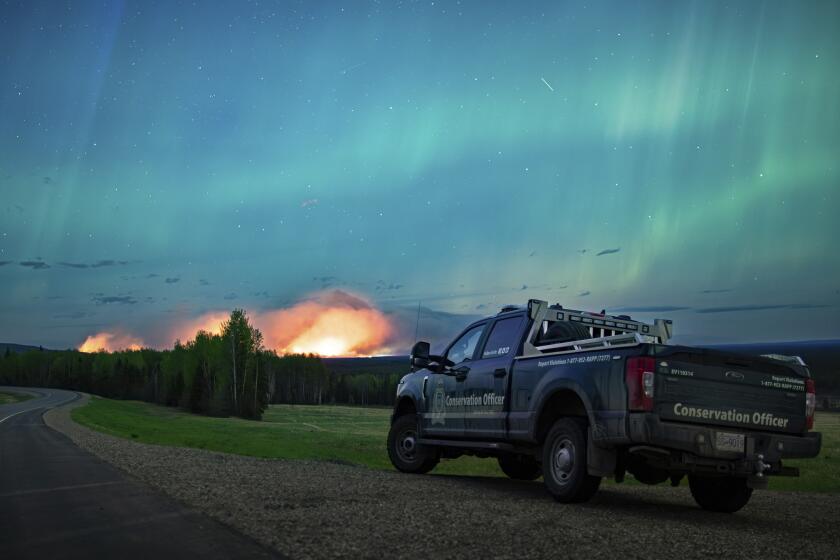Zeroing In on the Origin of a Wildfire
While dozens of firefighters tried to contain a wildfire that devastated a mountaintop community earlier this summer, a smaller group was focused on a much more delicate but nevertheless important task.
Investigators using a combination of science and old-fashioned detective work were looking for clues that would answer the key questions: How did the Aspen fire start? And why?
The Aspen fire began June 17 and eventually covered nearly 85,000 acres of the Coronado National Forest before being contained July 15. It destroyed 322 homes in and around the vacation hamlet of Summerhaven.
With any wildfire or building fire, investigators must zero in on the point of origin before hoping to determine the cause.
In the Aspen fire, a lookout tower spotter saw smoke and provided coordinates when the fire was small. Firefighters were on the scene when the blaze had spread across less than 30 acres.
“So right there you’ve got a visual,” said Suzanne Romero, a Forest Service fire investigator attached to the Coconino National Forest in northern Arizona. “You can start at that point.”
Then comes more meticulous work. Investigators walk in clockwise and counterclockwise circles near where the fire is believed to have started, looking for clues. These can include charring, the angle of charring, how hot the fire burned and what happened to nearby trees, Romero said. Slope and char marks tell investigators the fire’s direction, she said.
Det. David Conto, a Pima County sheriff’s fire investigator, said the angles and depths of the charring also provide clues.
“Different angles with different slopes mean different things: what direction the fire’s moving, whether it’s backing down ... or going up-slope,” Conto said.
Then there are things like small materials on the ground, including grass stems, pine cones, rocks and pine needles.
“You can look at and see which way the fire is moving or comes from based on which way the stems fall, or the char on the rocks, or the way the little grass stubs come up,” he said.
At some location the indicators point in different directions, and “that starts gearing you to thinking here’s the area of confusion, which is possibly where the fire started,” she said.
Investigators also map their findings on sketch pads.
“You keep narrowing your ring of the area of size that you’re looking at,” Conto said. “You’re tracking back the area of origin to the smallest area you can determine.”
On the Aspen fire, investigators narrowed the start zone to a 900-square-foot area within 10 days and concluded that the fire was caused by humans, ruling out lightning.
Romero said 99% of the time she can tell a lightning strike by its unique characteristics, from a fresh strike on a tree or widely scattered pieces of fresh wood, to dripping pitch or a tree blown in half and burning midway up the trunk. Aspen fire investigators found no signs characteristic of lightning strikes.
But they have yet to settle on a culprit. They haven’t concluded whether the fire was arson or an accident, and they haven’t found the person responsible.
On some fires, investigators may determine through a sighting or contact that someone was camping and track the person through records.
Through interviews, “people can all of a sudden realize that they saw something or realize they may have made a mistake,” Conto said.
Investigators identified several people who were on a trail the day the fire started on Mt. Lemmon, northeast of Tucson. None are considered suspects, but they may have seen something helpful, Forest Service spokeswoman Heidi Schewel said.
She said the investigation remains very active.
“They continue to move forward,” Schewel said. “They will continue until they reach a dead end or until they identify the person or persons responsible.”
More to Read
Start your day right
Sign up for Essential California for news, features and recommendations from the L.A. Times and beyond in your inbox six days a week.
You may occasionally receive promotional content from the Los Angeles Times.






